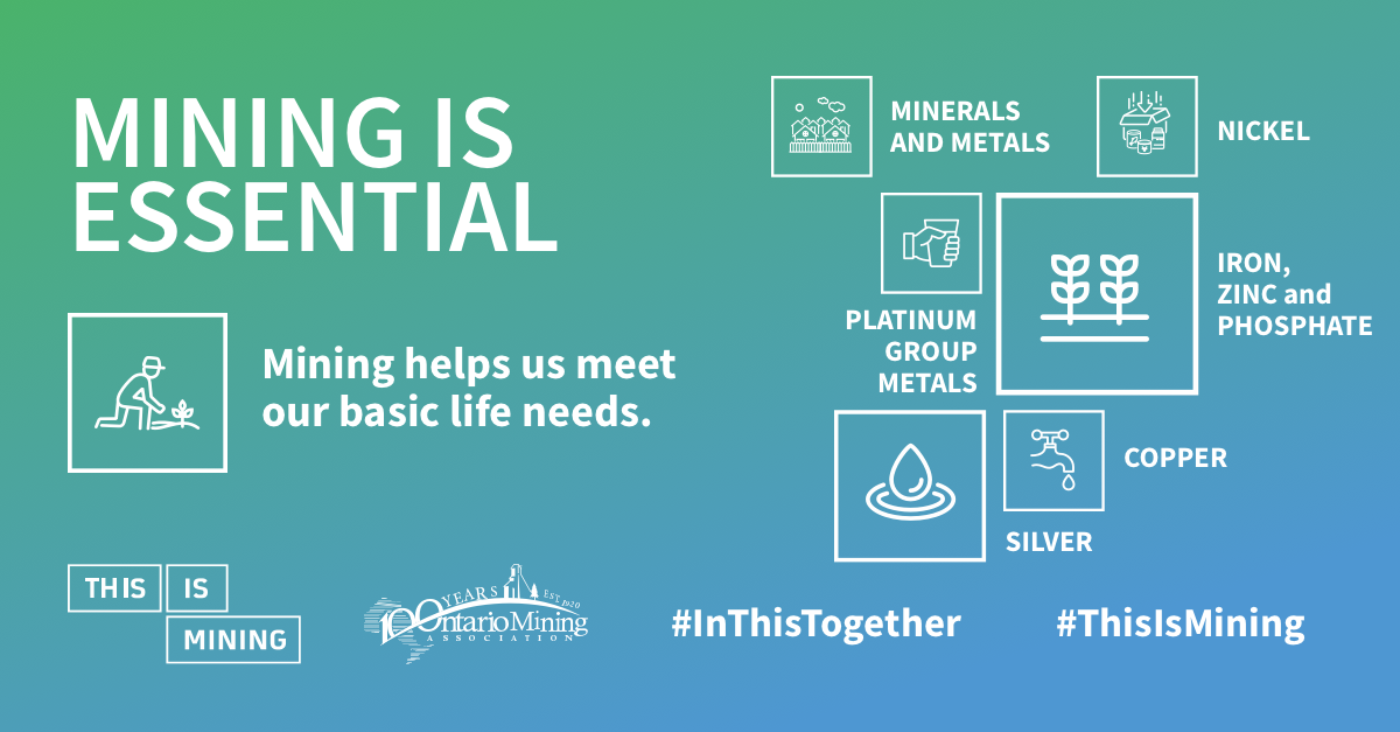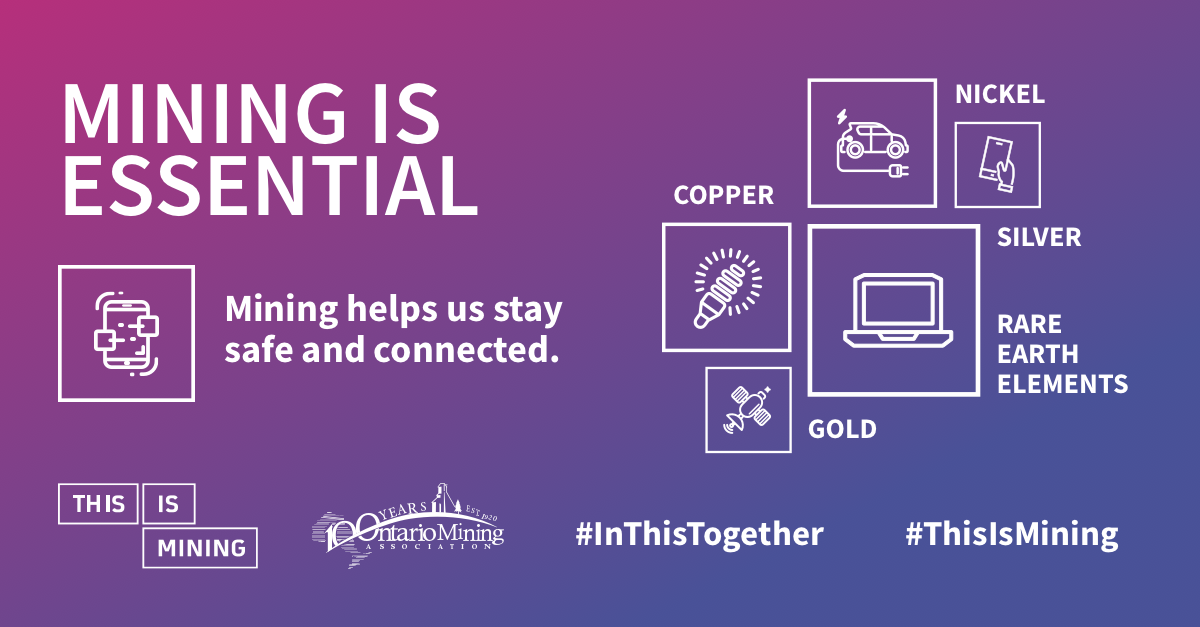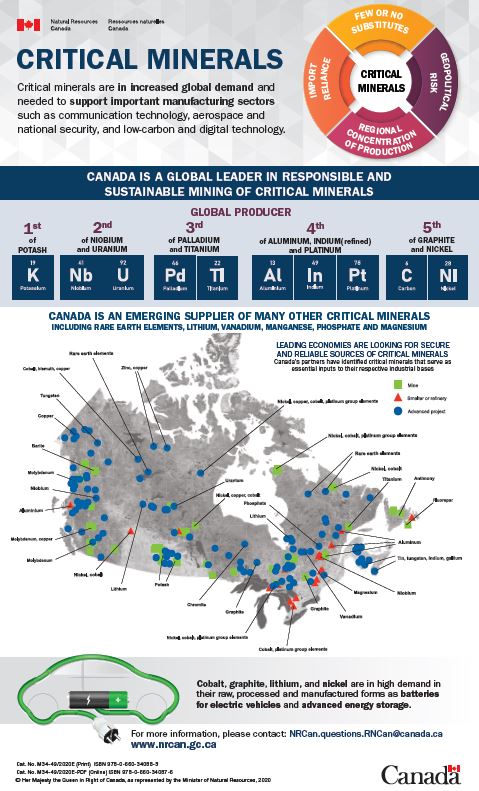Essential Minerals
Mining has been a part of Ontario's fabric since the dawn of civilization and it is an integral component of its high-tech, environmentally-conscious future. Ontario's native population was the first to tap into the province's vast mineral wealth. Major discoveries and mine development in the 20th century underpinned Ontario's rise to the status of Canada's most populous and wealthiest province, and supported Canada's development as an industrialized and globally competitive nation. Learn a brief history of mining in Ontario.
Today, mining in Ontario is a multi-million dollar industry known around the world for its safety and environmental leadership, efficiency, productivity and innovation. Mining enriches our lives with everyday essentials. Ontario's minerals help improve the air we breathe and the food we eat. Farmers and gardeners treat their soil with lime, peat and fertilizers. We season our food with salt and use manganese and carbon to purify water and reduce air pollution. Catalytic converters rely on platinum and palladium to reduce vehicle emissions.
Minerals help save lives and improve our health. Radioactive cobalt and iridium are used in life-saving cancer treatments. Silver is used in X-rays and photographs. Zinc, iodine, magnesium, calcium carbonate, talc and iron are found in toothpaste, talcum powder, sun-screens, cough lozenges and first aid creams. Minerals added to vitamin pills are among the 60 our bodies require for vitality and organ function.
From nickel batteries to copper wiring, silica in light bulbs to uranium for nuclear power, minerals bring us energy and light. More than 30 minerals and metals are used to produce computers, televisions, stereo systems and kitchen appliances. Minerals also open our world to travel. Airplanes, cars, trucks, boats and trains are built with cobalt, steel, iron, copper, zinc and aluminum.
Previously associated with lead pencils and golf clubs, graphite is used in refractory and lubricant applications -braking systems rely on barium and graphite. In addition, graphite is a key component of new energy applications, including lithium-ion batteries used in electric and hybrid electric cars.
Our homes, offices, schools and roads are built with gypsum, silica, stone, sand and gravel from Ontario mines and quarries. Decorative stone such as granite, marble and sandstone adds beauty to our buildings and monuments. When we give gifts of gold, silver, platinum and gemstones, Ontario minerals become part of the most special days of our lives.
Critical Minerals
There is growing global demand for clean energy and other low-carbon, environmentally-friendly technologies, and Canada is a responsible, reliable supplier of the raw materials that are essential to the green economy.
The Ontario government is implementing its first-ever Critical Minerals Strategy to help generate investment, increase the province's competitiveness in the global market, and create jobs and opportunities in the mining sector. It also supports our transition to a low-carbon economy both at home and abroad. Read the OMA's Critical Minerals Profiles report.





